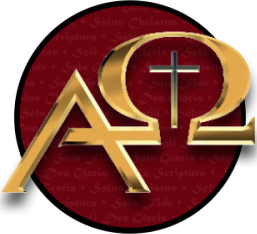The first official (i.e., sanctioned by the Pope) printed Greek New Testament appeared as part of the Complutensian Polyglot, a multi-lingual, multi-volume work. Although it was planned as early as 1502, was complete by 1517, and received Papal sanction by 1520, it was not published until 1522. While the Polyglot was in the process of being finished and sanctioned, a Roman Catholic Dutch humanist scholar, Desiderius Erasmus, who, possibly with the encouragement of his publisher Johann Froben, produced an unofficial edition of the Greek New Testament in 1516. Erasmus’ work was fraught with problems. It is possible that Froben knew of the impending publication of the Polyglot and hurried Erasmus to finish his work to beat it to publication. As a result, the work contained many typographical errors. If this were not enough, Erasmus was unable to locate any single complete New Testament manuscript upon which to base his text; hence he had to compile his text from several manuscripts. All of his manuscripts were relatively late (from the tenth to the twelfth century), and the only manuscript he had of Revelation was missing its last page, leaving him no alternative than to translate these six verses from Latin into Greek. Given the fact that study of Greek was still relatively new in the West, and that Erasmus had no other text to work from, it is not surprising that this bold move generated a number of words that are unknown in any other Greek text, let alone New Testament manuscript.
Erasmus published five editions of his Greek New Testament, the second of which was used by Martin Luther for his German translation. For the fourth edition, in recognition of the superior text contained in the Complutensian Polyglot (which had been published by that time), Erasmus made corrections in about ninety passages.
Although Erasmus’ text was flawed, the fact that it was the first on the market, and that it was relatively inexpensive, secured its position as the text of the Greek New Testament for hundreds of years. While other editions followed at the hands of able scholars (Robert Estienne (Stephanus), Theodore Beza, and the Elzevir brothers who coined the term “Textus Receptus,” or the “Received Text,” as part of their marketing literature), they all to some extent reproduced the work of Erasmus. Indeed, to this day, when people refer to the Textus Receptus, or the “Received Text,” they are invariably referring to Erasmus’ work.
From the time of Stephanus’ edition (1550) until 1881, Erasmus’ text was refined and corrected according to manuscript finds from museums and libraries, quotations from the Early Church Fathers, and different language versions as they were available. Scholars also began the practice of making note of places where the published text varies from other manuscripts. Over time, these footnotes containing variant readings would evolve into elaborate apparati by which the armchair textual critic could evaluate the chosen readings for himself without having to examine hundreds of manuscripts. Modern editions of the Greek New Testament (such as the Nestle-Aland and the United Bible Societies texts) contain such apparati at the bottom of each page of text.
While the majority of the manuscripts in use up to 1881 were late miniscules, there were some notable codices available to scholars of the day. Theodore Beza had in his collection what has come to be known as Codex Bezae, a fifth century codex of which there are 415 pages extant containing the Gospels, Acts, and the Catholic Epistles in Greek along with a Latin translation. Also in Beza’s possession was Codex Clarmontanus, of which 533 pages are extant. This is a sixth century codex containing the Pauline Epistles. While the value of these manuscripts is a matter of controversy today, they were probably superior to many others that were available to Beza. However, he chose not to make much use of them since they deviated too much from the standard text of the time. A reference to a manuscript made available by the Pope to the editors of the Complutensian Polyglot suggests that the famous (or infamous, depending on one’s perspective) Codex Vaticanus was also known at that time.
During this period, some brave scholars actually departed from the Textus Receptus in their editions of the Greek New Testament. With an increase in manuscript discoveries, texts came to light from earlier periods that gave some scholars reason to question some of the previously accepted readings. These scholars were certainly a minority, and it took two events at the end of the nineteenth century to finally break the dominance of the Textus Receptus: the discovery of Codex Sinaiticus, and the publication of Westcott and Hort’s Greek New Testament.
Part 6: The Challenge to the Received Text–coming soon…




